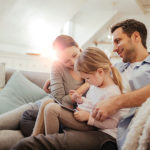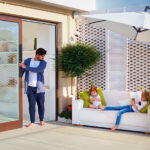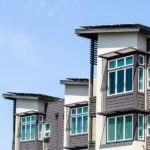Termite Infestation Signs in Bay Area, CA
Signs of Termite Infestations
MightyMite Termite Services is widely known throughout the Bay Area for superior customer service and effective termite removal services. Our company prides itself on continuing that legacy – one termite at a time. Many of our customers lack basic understanding about termites, and that’s okay. That’s what we’re here for! With that being said, it still helps to be prepared. Termites are unseen but destructive forces that are often difficult to destroy. With over 120 million years of evolutionary history under their belts, they’ve learned to adapt and avoid capture. Successful infestation eradication begins with detection. This page is designed to help you form an initial assessment so that you can call MightyMite Termite Services armed with advanced knowledge.
Understanding Basic Termite Facts
Before you can root out an infestation, it helps to understand how termites’ function, what they do, and how their life-cycles work. A little knowledge goes a long way toward helping you notice some of the subtler signs of a termite infestation. California hosts three species of termites, Western Drywood, Subterranean, and Pacific Dampwood Termites, and each behaves differently. Some of the crucial differentiators include:
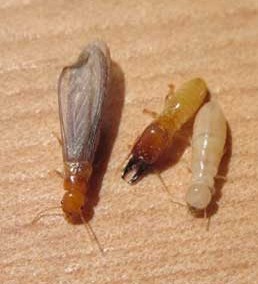
As the name suggests, Western Drywood Termites prefer drier woods. They don’t require much moisture, so you won’t necessarily find them on the ground or near plentiful moisture sources. As a result, these colonies do a tremendous amount of damage. They can even migrate in used furniture and establish new colonies throughout your home or business.
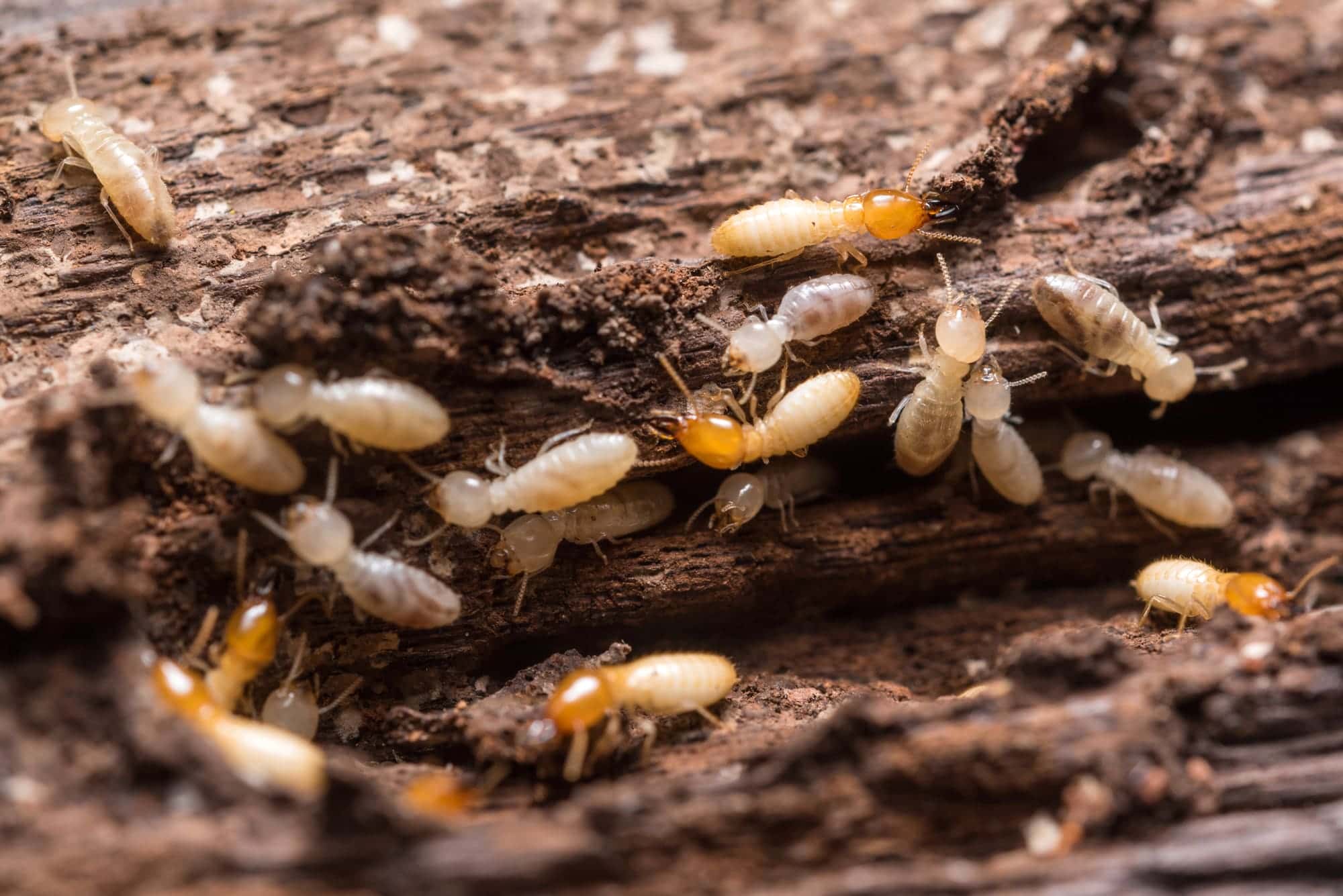
Unlike Western Drywood Termites, Subterranean Termites must have access to plenty of moisture. This species requires up to 70 percent moisture, which is why you’ll find them lurking around the foundations of your home. They burrow deep underground, establishing highly-organized colonies whose only aim is to eat away at the wood structures which form the basis of your building.
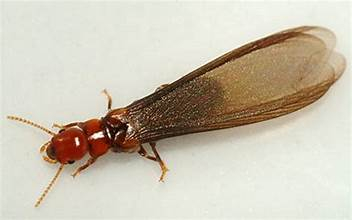
As the name suggests, Pacific Dampwood Termites are picky eaters, preferring to devour soft and damp woods. However, they present a challenge to homeowners due to their tenacity and prolific reproductive activities. Once a colony of Pacific Dampwood Termites sets up shop in your home, it can be challenging to kill or remove them.
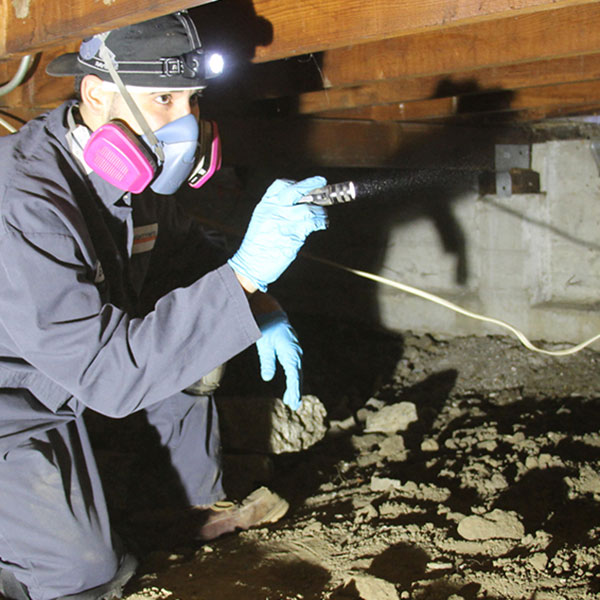
MightyMite Termite Services’ Comprehensive Free Inspections
MightyMite Termite Services advises customers to be extra vigilant in guarding against infestations. We offer exhaustive and comprehensive free inspections for that purpose. We thoroughly inspect every inch of your property, keeping a close eye on traditional entry points, and using our trained eyes to locate not only active infestations, but conducive conditions that can lead to them. During an annual or real estate inspection, our team checks for a variety of signs of termite infestations. If we determine you have a problem, we’ll outline a treatment plan custom made for your home and particular infestation.
Keep an Eye Out for Blistered Wood Floors
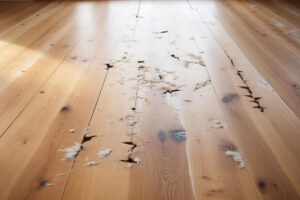
Subterranean Termites are responsible for blistered wooden flooring, a common symptom of termite damage. They require a moisture-rich environment, so they’ll need to come from below. If you see raised portions in your flooring – especially laminate or synthetic wood floors – then you could have termite damage. It is important to realize blistered wood floors aren’t always the result of termites, but you should still call MightyMite Termite Services for a complimentary inspection just in case.
Keep an Eye Out for Evidence of Swarms
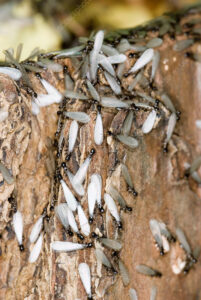
In all three native termite species, “swarmers” are winged, reproductive entities in the termite colony. Their responsibilities are to reproduce and find a home for a colony. Once they find one, they shed their wings, leaving them behind at the entry point. So, if you see swarms of termites on your property, you should call us. If you notice wing deposits around door frames, for example, then this could also be a sign an infestation is underway.
Hollowed or Damaged Wood is a Tell-Tale Sign of Infestation
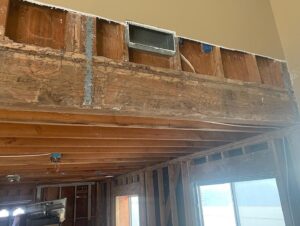
Behind your walls and beneath your floors lie several wood installations. Termites systematically chew through wood, leaving empty chambers in your wood fixtures, referred to as galleries. If you have access to the wood under your floor or behind the wall, you can tell if termites have consumed any wood. Typical galleries have a honeycomb appearance and long grooves, which often take on a maze-like appearance. Any noticeable hollowed or damaged wood should be taken seriously.
Mud Tubes Indicate the Presence of Subterranean Termites
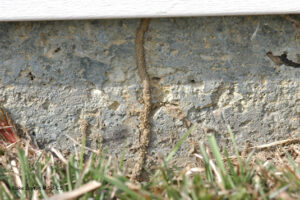
Subterranean Termites build “mud tubes,” which are pencil-thin structures they use to migrate from the ground to the wood in your home. They nest underground and forage upwards for food, and the mud tubes are their chosen form of transportation. They also need certain humidity and temperature levels to survive, and the mud tubes enable them to do so.
Drywood Termite Droppings Are a Giveaway of Infestation
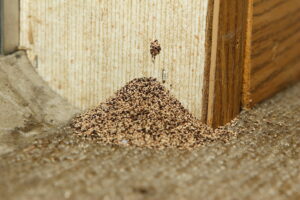
Drywood Termites leave behind droppings that look like wood pellets or peppery like sawdust because wood and cellulose are all they eat. Termites enjoy clean spaces, so as they work their way through your property, the colony’s workers build small holes in the galleries where they kick their excrement from their workspace. This action creates mounds of pellets at the point of infestation.
Keep an Eye Out for Drywall Damage
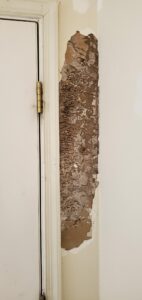
The wood termites eat sits behind your home’s drywall, so it makes sense drywall damage can indicate termite damage. There is any number of things to check for when you suspect termite damage. For instance, does the drywall in your house droop instead of sitting straight? Are there small, pinpoint-sized holes lining the drywall? If so, there might be a problem. The best solution is to call our termite exterminators for service.
Paint That Appears Water Damaged is a Bad Sign
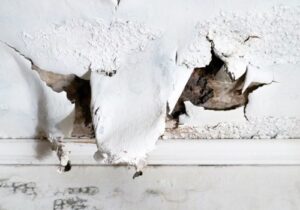
If you find peeling paint throughout your property, it might be time to call MightyMite Termite Services for an inspection. While peeling paint could be the result of water damage, termites can cause damage to the paint due to its proximity to the wood beams behind your walls.
Damaged Floors are a Dead Giveaway
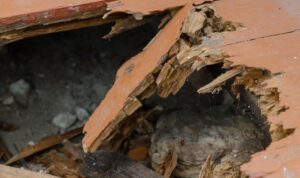
Subterranean Termites damage floors. Tiles, laminate, hardwood, and other materials all suffer from the damage caused by furiously eating termites. When you walk through your house, do the floors excessively squeak? This could be caused by a termite infestation, though there is no way to know for sure without a professional inspection.
If Wood Sounds Hollow When Tapped, You Might Have Termites
If you think you might need a termite exterminator, then one thing you can do is tap on the wooden areas in your house. Termites burrow inside the wood and consume from inside, so they leave behind hollow spaces. You can tell when they’ve hollowed-out a piece of wood or furniture if it makes a hollow and not solid noise.
Termites Decimate Wood, So Look for Crumbling Wood
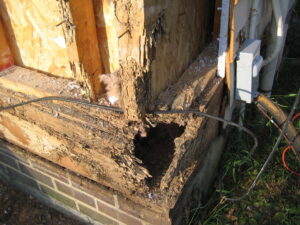
Termites have ravenous, unending appetites. Once they find a food source, they rapidly consume wood, never stopping or leaving, until they’ve taken it all. The result, if you don’t address the problem, could be not only very expensive repairs, but possibly structural failure. For instance, your house’s wood foundation is critical to the stability of the rest of the house. Without stable wood beams, your ceiling isn’t secure, the floors won’t be safe to walk on, and the structural integrity of your entire house suffers. So, one thing you can do is search for crumbling wood. If you find any on or around your property, you shouldn’t hesitate to contact MightyMite Termite Services. Our specialists can check areas of your home inaccessible to you and search for further indications of termites.
Contact Us for Termite Treatments Services
MightyMite Termite Services serves clients throughout the Bay Area. Whether you own a beach house or a commercial property, termites can attack. Our company helps customers recover and prevents long-standing damage to your property. We serve customers in Santa Clara, Alameda, Santa Cruz, San Mateo, Monterey, Contra Costa, and San Benito Counties. If you live within our service area and suspect your building is infested with termites, please contact us immediately. We’ll get started on an effective treatment plan immediately.



